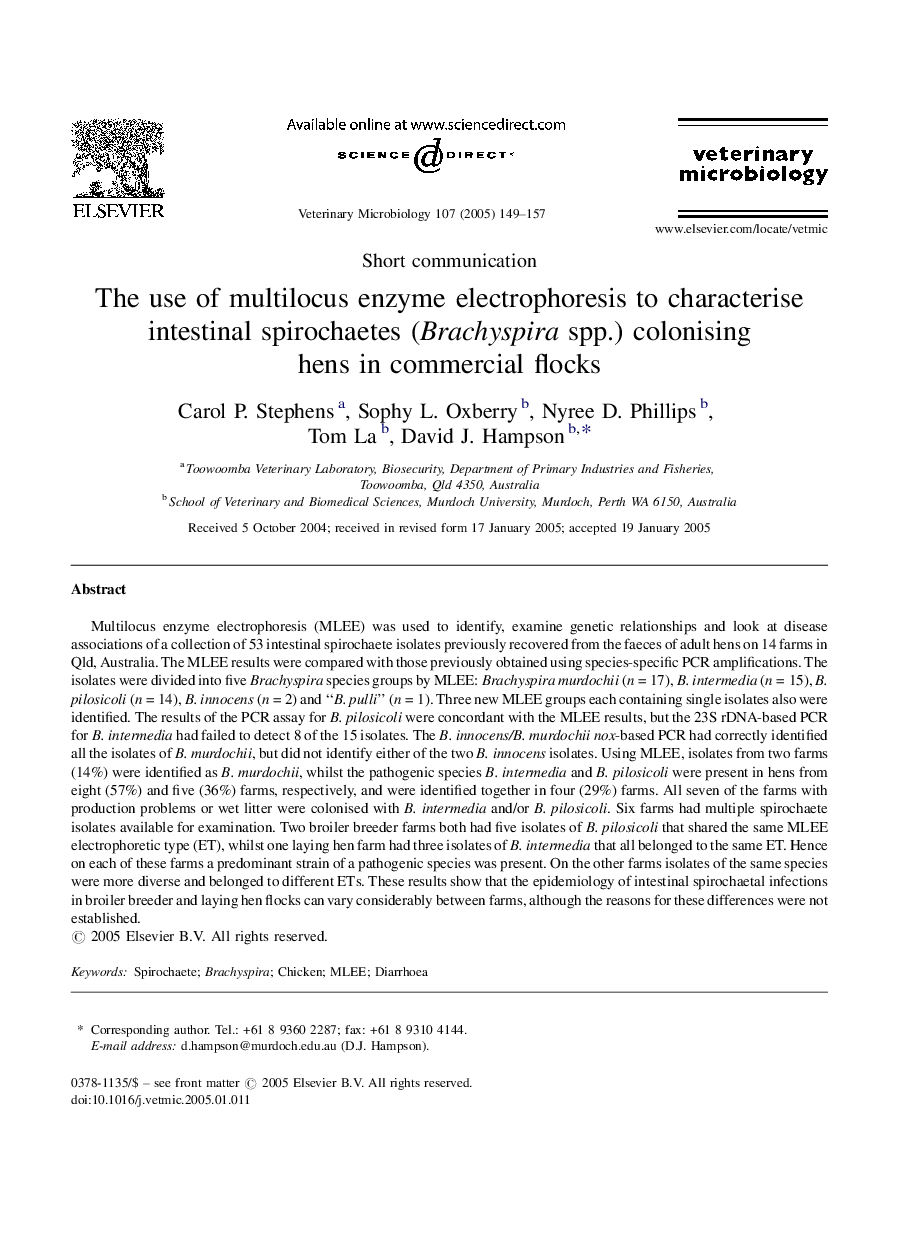| Article ID | Journal | Published Year | Pages | File Type |
|---|---|---|---|---|
| 8989504 | Veterinary Microbiology | 2005 | 9 Pages |
Abstract
Multilocus enzyme electrophoresis (MLEE) was used to identify, examine genetic relationships and look at disease associations of a collection of 53 intestinal spirochaete isolates previously recovered from the faeces of adult hens on 14 farms in Qld, Australia. The MLEE results were compared with those previously obtained using species-specific PCR amplifications. The isolates were divided into five Brachyspira species groups by MLEE: Brachyspira murdochii (n = 17), B. intermedia (n = 15), B. pilosicoli (n = 14), B. innocens (n = 2) and “B. pulli” (n = 1). Three new MLEE groups each containing single isolates also were identified. The results of the PCR assay for B. pilosicoli were concordant with the MLEE results, but the 23S rDNA-based PCR for B. intermedia had failed to detect 8 of the 15 isolates. The B. innocens/B. murdochii nox-based PCR had correctly identified all the isolates of B. murdochii, but did not identify either of the two B. innocens isolates. Using MLEE, isolates from two farms (14%) were identified as B. murdochii, whilst the pathogenic species B. intermedia and B. pilosicoli were present in hens from eight (57%) and five (36%) farms, respectively, and were identified together in four (29%) farms. All seven of the farms with production problems or wet litter were colonised with B. intermedia and/or B. pilosicoli. Six farms had multiple spirochaete isolates available for examination. Two broiler breeder farms both had five isolates of B. pilosicoli that shared the same MLEE electrophoretic type (ET), whilst one laying hen farm had three isolates of B. intermedia that all belonged to the same ET. Hence on each of these farms a predominant strain of a pathogenic species was present. On the other farms isolates of the same species were more diverse and belonged to different ETs. These results show that the epidemiology of intestinal spirochaetal infections in broiler breeder and laying hen flocks can vary considerably between farms, although the reasons for these differences were not established.
Related Topics
Life Sciences
Agricultural and Biological Sciences
Animal Science and Zoology
Authors
Carol P. Stephens, Sophy L. Oxberry, Nyree D. Phillips, Tom La, David J. Hampson,
